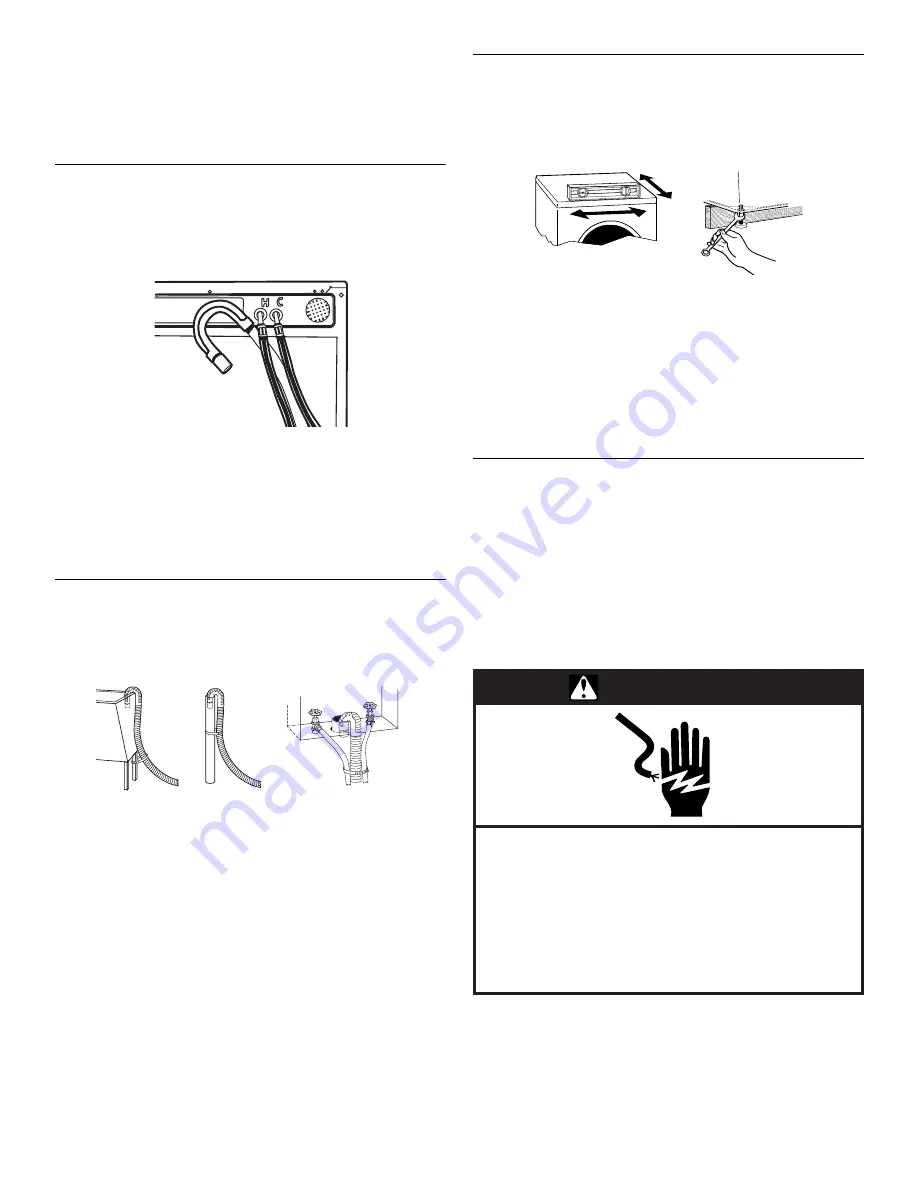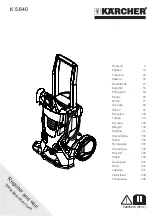
8
5. Turn on the water faucets and check for leaks.
NOTE: Replace inlet hoses after 5 years of use to reduce the
risk of hose failure. Record hose installation or replacement
dates on the hoses for future reference.
Periodically inspect and replace hoses if bulges, kinks, cuts,
wear, or leaks are found.
Route the Drain Hose
Proper routing of the drain hose protects your floors from
damage due to water leakage. Carefully read and follow these
instructions.
The drain hose is connected to your washer.
To prevent drain water from going back into the washer:
■
Do not straighten the drain hose, and do not force excess
drain hose into standpipe. Hose should be secure, but loose
enough to provide a gap for air.
■
Do not lay excess hose on the bottom of the laundry tub.
Floor drain
You may need additional parts. (See Floor Drain under “Alternate
Parts.”)
Secure the Drain Hose
1. Drape the power cord over the washer top.
2. Secure the drain hose to the laundry tub leg or standpipe with
the beaded strap provided. (See illustrations 1 and 2.)
If the washer faucets and the drain standpipe are recessed
(see illustration 3), put the hooked end of the drain hose in the
standpipe. Tightly wrap the beaded strap around the water
inlet hoses and the drain hose.
Do not force excess drain hose into the standpipe.
Level the Washer
Properly leveling your washer prevents excessive noise and
vibration.
1. Check the levelness of the washer by placing a level on the
top edge of the washer, first side to side, then front to back.
If the washer is against a wall, move the washer out slightly
before tipping back. If the washer is not level, first prop the
front with a wood block and adjust the feet as necessary;
then prop the back and adjust feet as necessary. Repeat this
step until washer is level.
2. After the washer is level, use a 17 mm open-end wrench to
turn the nuts on the feet tightly against the washer cabinet.
All 4 feet must be tightened. If the nuts are not tight against
the washer cabinet, the washer may vibrate.
3. Slide the washer to its final location.
4. Confirm the levelness of the washer.
Complete Installation
1. Check the electrical requirements. Be sure that you have the
correct electrical supply and the recommended grounding
method. (See “Electrical Requirements.”)
2. Check to be sure all parts are now installed. If there is an
extra part, go back through the steps to see which step was
skipped.
3. Check to be sure you have all of your tools.
4. Dispose/recycle all packaging materials.
5. Check to be sure the water faucets are on.
6. Check for leaks around faucets and inlet hoses.
7. Plug into a grounded 3 prong outlet.
8. Read “Washer Use.”
9. To test and to clean your washer, measure
¹⁄₂
the normal
recommended amount of powdered or liquid High Efficiency
(HE) detergent. Pour the detergent into the detergent
dispenser. Select NORMAL/CASUAL, and then select HOLD
TO START. Allow the washer to complete one whole cycle.
1
2
3
WARNING
Electrical Shock Hazard
Plug into a grounded 3 prong outlet.
Failure to follow these instructions can result in
death, fire, or electrical shock.
Do not use an extension cord.
Do not use an adapter.
Do not remove ground prong.
Summary of Contents for FRONT-LOADING AUTOMATIC WASHER
Page 21: ...21 Notes ...









































